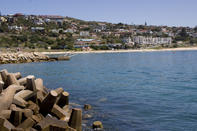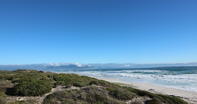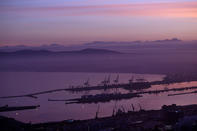Various Fixes

Sea behaviour will change, and our decision-making relating to coastal management needs to adjust accordingly. Society needs to be fleet of foot if we are to respond cleverly in this shapeshifting world.
We have three options when tackling sea level rise in this context:
The engineering fix: Traditionally, municipalities have gone for the hard-surfaced, technological fix to the problem of an encroaching sea. This includes building or installing seawalls, rock armour, dolosse and gabions, artificial reefs and the likes.
The nature conservation fix: Working with natural systems by protecting and rehabilitating dune cordons, estuaries, wetlands, and kelp beds to buffer a coastline against stormy seas.
The social and institutional fix: Mapping the vulnerability of the city’s coastline, creating buffer zones, communicating risk, applying legislation such as the Coastal Development Guidelines or the Integrated Coastal Management Act, limiting sand mining or filling in of wetlands, research and monitoring, and insurance market correction.
Managing Coastal Spaces

Even if the ocean wasn’t changing its behaviour because of climate change, a different approach to managing coastal spaces is sometimes called for. Now even more so, as the sea becomes fiercer. The City is calling for a proactive, ‘no regrets’ approach to managing coastal risks, which includes:
No additional reclamation of land from the sea.
Protection of wetlands, estuaries and dune cordons from artificial change by limiting new property and infrastructure development along the coast.
Avoiding over-investment in maintaining and protecting existing coastal developments and infrastructures that are built in high risk areas; rather, planning for relocation.
Maintenance of drains and stormwater systems so that they work properly to channel away excess water.
Uplifting poor communities to reduce exposure to risk.
Most of the risk brought on by a higher, stormier sea is because of historical planning decisions that, with hindsight, are inappropriate because of high exposure to coastal processes or because of the extent to which they undermine the natural buffering capacity of dunes and wetlands, for instance. In Cape Town, housing and infrastructure are central to coastal risk.
What does society do, in the face of this certain change in ocean behaviour?
Often, the first thing cities do in the face of an encroaching tide, is to throw up a wall of sorts. ‘Hard’ engineered solutions like sea walls, dolosse or gabions are technically complex, costly to build and maintain, are irreversible, and may not work. They create a false sense of security, often encouraging risky development behind them which, if they’re breached by a storm surge can cause extensive and costly damage.
Engineering Solutions

Engineering solutions should be the last line of defence. They should only be used when all other options have been exhausted, or when infrastructure, especially that which serves the public interest, is too valuable to ‘let go’. This includes:
Good governance: A city like this needs a new way of thinking, in terms of how it manages its coastlines, particularly as its politicians and bureaucrats balance the need for development and economic growth with keeping the coast ecologically healthy and functioning.
Bringing in the insurers: The insurance industry understands the cost implications of climate change, considering the big payouts already linked with extreme weather events. Insurance companies can take a ‘carrot or stick’ approach to encouraging climatewise development and management of high risk areas.
Development isn’t the problem in coastal management, but rather how that development is allowed to happen. Ill-advised building and construction upsets the coast’s equilibrium, increasing the risk both to the economy, to people, and to the environment. Protecting such developments often calls for expensive, engineered ‘fixes’.